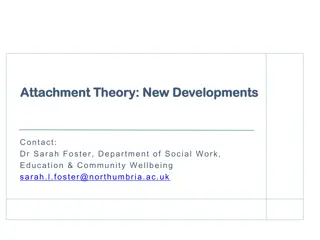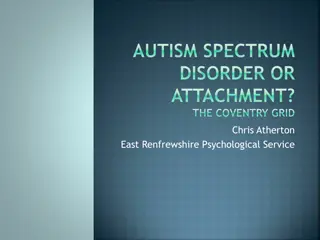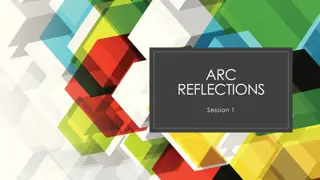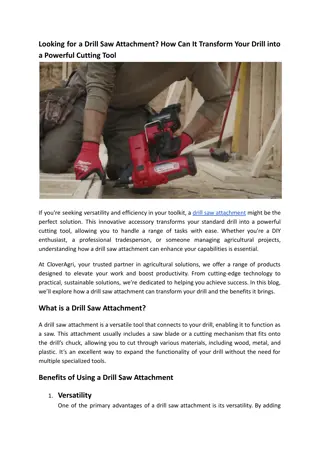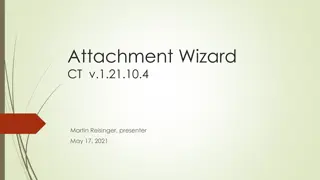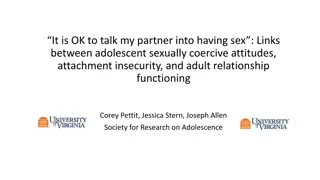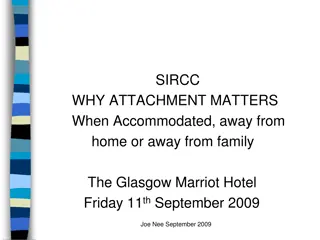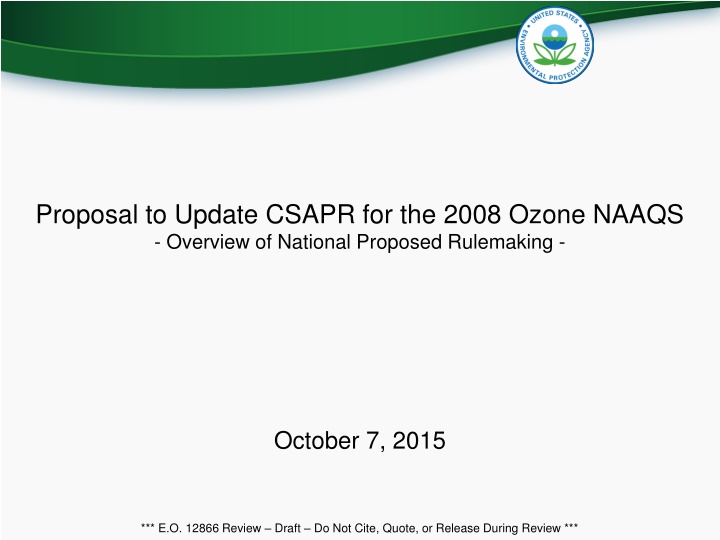
Update of CSAPR for 2008 Ozone NAAQS
The proposal aims to update the Cross-State Air Pollution Rule (CSAPR) to address interstate air quality impacts concerning the 2008 Ozone National Ambient Air Quality Standards. By implementing Clean Air Act good neighbor obligations and utilizing an allowance trading program, the proposal seeks to reduce electric generating unit ozone season NOx emissions in 23 eastern states starting in 2017. The estimated benefits range from $700 million to $1.2 billion annually, with an annualized cost of $92 million (2011$), providing a partial solution to ozone transport.
Download Presentation

Please find below an Image/Link to download the presentation.
The content on the website is provided AS IS for your information and personal use only. It may not be sold, licensed, or shared on other websites without obtaining consent from the author. If you encounter any issues during the download, it is possible that the publisher has removed the file from their server.
You are allowed to download the files provided on this website for personal or commercial use, subject to the condition that they are used lawfully. All files are the property of their respective owners.
The content on the website is provided AS IS for your information and personal use only. It may not be sold, licensed, or shared on other websites without obtaining consent from the author.
E N D
Presentation Transcript
Proposal to Update CSAPR for the 2008 Ozone NAAQS - Overview of National Proposed Rulemaking - October 7, 2015 *** E.O. 12866 Review Draft Do Not Cite, Quote, or Release During Review ***
Briefing Outline Highlights Background Context Stakeholder Engagement The Cross-State Air Pollution Rule (CSAPR) Framework Applying the CSAPR Framework for the 2008 Ozone NAAQS Identifying Downwind Ozone Problems Linking Upwind States Quantifying Upwind Obligations Implementing Reductions via Regional Trading Program Interaction with the July 2015 D.C. Circuit Opinion on CSAPR Summary 2 *** E.O. 12866 Review Draft Do Not Cite, Quote, or Release During Review ***
Highlights 3 *** E.O. 12866 Review Draft Do Not Cite, Quote, or Release During Review ***
Highlights The proposal addresses interstate air quality impacts with respect to the 2008 ozone National Ambient Air Quality Standards (NAAQS). The EPA is proposing to address this air pollution problem by updating the existing Cross-State Air Pollution Rule (CSAPR) for this standard. The CSAPR framework is applied to identify Clean Air Act good neighbor obligations (i.e., statewide emissions limits). These limits would be implemented with the CSAPR allowance trading program. Using the CSAPR framework, this action proposes to reduce electric generating unit (EGU) ozone season NOX emissions in 23 eastern states, starting with the 2017 ozone season. EGU NOX reductions that are available starting with the 2017 ozone season are a meaningful but partial solution to ozone transport. The estimated benefits of the proposal are $700 million to $1.2 billion annually for 2017 while the annualized cost of the proposal is $92 million (2011$). 4 *** E.O. 12866 Review Draft Do Not Cite, Quote, or Release During Review ***
Background 5 *** E.O. 12866 Review Draft Do Not Cite, Quote, or Release During Review ***
Context Clean Air Act (CAA) section 110(a)(2)(D)(i)(I) requires states to prohibit emissions that will contribute significantly to NAAQS nonattainment downwind or interfere with maintenance of NAAQS downwind. States and EPA need to address interstate transport for the 2008 ozone NAAQS. CSAPR addresses the 1997 ozone NAAQS and the 1997 and 2006 PM2.5 NAAQS On August 21, 2012, the D.C. Circuit issued the EME Homer City opinion holding, among other things, that states had no obligation to submit transport SIPs until EPA first quantified each state s transport obligation. On April 29, 2014, the Supreme Court issued a decision reversing the D.C. Circuit s EME Homer City opinion reaffirming that transport SIPs were due in March 2011. Near-term NOX reductions are needed to help downwind areas attain the 2008 ozone NAAQS by the July 2018 moderate attainment date. Some state efforts may lead to approvable SIPs, avoiding the need for a FIP, but the proposal is needed as a backstop. 6 *** E.O. 12866 Review Draft Do Not Cite, Quote, or Release During Review ***
Stakeholder Engagement On August 7, 2014, the EPA announced its plans for supporting state efforts to address interstate ozone transport for the 2008 NAAQS and for fulfilling its federal backstop role if necessary. 1. Provide information and guidance to states to encourage and facilitate development of approvable transport SIPs. 2. Issue findings of failure to submit transport SIPs for the 2008 ozone NAAQS. 3. Propose FIPs to quantify and address states transport obligation for the 2008 ozone NAAQS. 4. Approve ozone transport SIPs or finalize FIPs where we have authority (i.e., where states have failed to submit or EPA has disapproved ozone transport SIPs). EPA summarized these plans on its air transport web page and has engaged with states, industry, tribes, and communities. The proposal fulfills step 3 in this plan. We have previously taken actions that address steps 1 and 2. 7 *** E.O. 12866 Review Draft Do Not Cite, Quote, or Release During Review ***
The CSAPR Framework CSAPR s framework builds on previous transport rules and court decisions (e.g., the NOX SIP Call and Clean Air Interstate Rule). The CSAPR framework has four overarching steps: Step 1: Identifying downwind areas that are expected to have problems attaining and/or maintaining the NAAQS. Step 2: Determining which upwind states are linked to these downwind areas. Step 3: Quantifying the level of upwind NOX reductions, apportioning upwind responsibility, and setting corresponding statewide emissions limits. Step 4: Implementing reductions via a regional allowance trading program. 8 *** E.O. 12866 Review Draft Do Not Cite, Quote, or Release During Review ***
Applying the CSAPR Framework for the 2008 Ozone NAAQS 9 *** E.O. 12866 Review Draft Do Not Cite, Quote, or Release During Review ***
Aligning Analysis and Compliance with the NAAQS The proposal aligns analysis and implementation with relevant attainment dates for the 2008 ozone NAAQS, as required by the D.C. Circuit s decision North Carolina v. EPA. EPA s final 2008 Ozone NAAQS SIP Requirements Rule set July 2018 as the attainment deadline for ozone nonattainment areas currently designated as moderate, in accordance with the D.C. Circuit s decision in NRDC v. EPA. Because July 2018 falls during the 2018 ozone season, the 2017 ozone season will be the last full season from which data can be used to determine attainment by July 2018. We believe that North Carolina compels the EPA to identify upwind reductions and implementation programs to achieve these reductions, to the extent possible, starting with the 2017 ozone season. We note that 2017 also is: Responsive to downwind state desires to put reductions in place quickly. Timely to address the D.C. Circuit s remand of certain CSAPR NOX ozone-season phase 2 emissions budgets. A factor in the proposal s partial solution for ozone transport. 10 *** E.O. 12866 Review Draft Do Not Cite, Quote, or Release During Review ***
Step 1: Identifying Downwind Ozone Problems The proposal identifies two categories of downwind ozone problems, nonattainment and maintenance. Nonattainment receptors are air quality monitors that are expected to exceed the NAAQS. Identified as monitors that currently measure nonattainment and that have a projected average design value exceeding the NAAQS in 2017. This approach was used in the NOX SIP Call and CAIR and was affirmed as reasonable by the D.C. Circuit in North Carolina. Maintenance receptors are air quality monitors that are at risk of exceeding the NAAQS. Identified as monitors with a projected maximum design value that exceeds the NAAQS in 2017 even if not currently measuring nonattainment. CSAPR defined maintenance receptors in this way with respect to the 1997 ozone and standard and the PM2.5 standards. The D.C. Circuit declined to upset this approach in the CSAPR litigation. 11 *** E.O. 12866 Review Draft Do Not Cite, Quote, or Release During Review ***
Step 2: Linking Upwind States The proposal maintains the CSAPR threshold of 1% of the NAAQS to determine which upwind states are linked to downwind nonattainment and maintenance receptors. 12 *** E.O. 12866 Review Draft Do Not Cite, Quote, or Release During Review ***
Step 3: Quantifying Upwind Obligations The proposal quantifies upwind obligations to reduce interstate ozone transport in the East. There may be additional criteria to evaluate regarding collective contribution of transported air pollution in the west. This focus does not relieve western states of obligations to address interstate transport, which these states can work with EPA to evaluate on a case-by-case basis. The proposal does not quantify non-EGU emission reductions EPA is less certain that significant NOX mitigation is achievable from non-EGUs for the 2017 ozone season. We will continue to evaluate whether non-EGU emission reductions can be achieved on a longer time-frame at a future date. The proposal would promulgate state-level EGU emissions budgets (statewide limits on allowable emissions) reflecting NOX mitigation that is cost-effective at a uniform cost of $1,300 per ton. Analysis demonstrates that this level does not over-control EGUs in these states, per Supreme Court and D.C. Circuit opinions on CSAPR. The proposal takes comment on more and less stringent EGU emissions budgets reflecting uniform costs of $3,400 per ton and $500 per ton, respectively. 13 *** E.O. 12866 Review Draft Do Not Cite, Quote, or Release During Review ***
Step 4: Implementing Reductions via Regional Trading Program The proposal uses CSAPR s NOX ozone season trading program to implement the updated emissions budgets. CSAPR s assurance provisions allow limited interstate trading to provide flexibility while ensuring that reductions occur within each upwind state. The proposal seeks comment on a range of options related to transitioning the existing CSAPR NOX ozone-season trading program to address ozone transport for the lower 2008 ozone NAAQS. Use of banked 2015 and 2016 vintage allowances. Use of allowances issued in a non-updated state (i.e., Georgia) for compliance in an updated state. 14 *** E.O. 12866 Review Draft Do Not Cite, Quote, or Release During Review ***
Interaction with the July 2015 D.C. Circuit Opinion on CSAPR On July 28, 2015, the D.C. Circuit issued its opinion largely upholding CSAPR and keeping the rule in place. This opinion remanded to EPA (without vacatur) several states CSAPR phase 2 (i.e., 2017) emissions budgets due to over-control. NOX ozone-season budgets for 10 states, which the court held were not necessary. The NOX ozone-season budget for Texas, which the court held to be over-control. SO2 annual budgets for Texas, Alabama, Georgia, and South Carolina, which the court held to be over-control. The proposal would replace the invalidated NOX ozone-season phase 2 emissions budgets for 9 states and remove 2 states from the CSAPR NOX ozone-season trading program. The proposal addresses over-control issues identified by the Court for all covered states. The proposal does not address the remand of the CSAPR SO2 annual phase 2 emissions budgets, which will be addressed separately. 15 *** E.O. 12866 Review Draft Do Not Cite, Quote, or Release During Review ***
Summary The proposal updates CSAPR to reduce EGU ozone season NOX emissions in 23 eastern states that affect the ability of downwind areas to attain or maintain the 2008 ozone NAAQS, starting with the 2017 ozone season. In doing so, the proposal also responds to the July 28, 2015 remand by the D.C. Circuit of certain states CSAPR NOX ozone-season emissions budgets. The estimated benefits of the proposal are $700 million to $1.2 billion annually for 2017 (2011$). The annualized cost of the proposal is $92 million (2011$). 16 *** E.O. 12866 Review Draft Do Not Cite, Quote, or Release During Review ***


